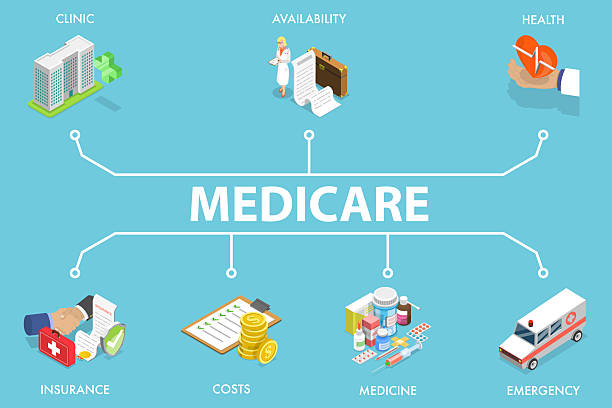Mismatched Medicare coverage can be a silent saboteur. One day you’re cruising through checkups without a problem. Then suddenly, a specialist visit leaves you with an eye-watering bill because your plan didn’t cover it the way you assumed. Choosing a plan is not about guessing and hoping for the best. It’s about tracking your actual health needs, anticipating what will change, and matching a policy’s fine print to your lifestyle. The wrong plan can shrink your options and inflate your costs. The right one keeps your care aligned with your goals and your wallet intact.
How Medicare Plan Types Differ
Original Medicare, made up of Part A (hospital coverage) and Part B (medical coverage), is straightforward but leaves gaps. No built-in drug coverage, limited protection from runaway costs, and you can see any provider who accepts Medicare. Medicare Advantage, or Part C, bundles Parts A and B, often adds Part D, and typically offers extra perks. You trade broad provider choice for a managed network and sometimes lower overall costs. Standalone Part D focuses solely on prescription drugs, useful if you stick with Original Medicare but need drug coverage. Decide based on how you actually use healthcare, not on glossy brochure promises.
Balancing Costs in Your Medicare Insurance Plan
Chasing the lowest premium can backfire. You might save $50 a month but pay triple in copays and deductibles when your health needs spike. Picture this: one plan costs $30 monthly with $40 copays for specialists; another is $80 monthly with $10 copays. If you see a specialist twice a month, the “cheaper” plan is suddenly bleeding $80 in copays compared to $20. Premiums and out-of-pocket costs are inseparable. Run the numbers for your reality, not for an imaginary average person. The best deal is the one that delivers value when you actually need care.
Navigating Provider Networks in Medicare Insurance
Provider networks are gatekeepers. In-network care is generally cheaper and simpler. Go out-of-network and your bill can double or coverage might vanish altogether. Always verify through the plan’s provider directory, but don’t trust it blindly—call the office to confirm they still participate. Plans change contracts midyear and what was covered in January might not be in November. Know exactly where you can get care before you sign anything.
Understanding Drug Benefits and Coverage Gaps
Drug coverage hinges on the formulary, the plan’s list of approved drugs sorted into tiers with escalating copays. Miss that detail and your prescription could spike in cost overnight. Part D plans also have the notorious coverage gap, often called the “donut hole,” where costs jump after hitting a certain spending threshold. Smart moves—like using generics, asking for therapeutic alternatives, or timing refills—can blunt the damage. Always check your current meds against the formulary before locking in a plan. Tomorrow’s sticker shock is easy to avoid if you see it coming today.
Discovering Extra Perks with Medicare Insurance
Some plans dangle extras: vision checkups, dental cleanings, hearing aids, wellness programs, even gym memberships. These can boost quality of life and save you uneven out-of-pocket splurges. But perks vary wildly between plans and regions. One policy’s “comprehensive dental” might only cover cleanings, while another pays for major work. Treat these add-ons as nice-to-have, not plan-defining, until you confirm what they actually deliver.
Knowing When to Act on Medicare Insurance
The Initial Enrollment Period spans seven months around your 65th birthday. The Annual Enrollment Period—October 15 to December 7—lets you switch plans. Special Enrollment Periods pop up if you move, lose employer coverage, or face other qualifying events. Missing these windows means waiting or paying penalties. Mark the dates, tie them to your calendar, and act decisively when the window opens.
Preventing Mistakes in Medicare Insurance Sign-Up
Skipping deadlines is costly. Comparing plans without adjusting for provider networks or ignoring the drug formulary changes can gut your budget. Another blunder is fixating on perks instead of coverage essentials. Quick fix: track dates, cross-check networks, verify drug coverage every year, and treat extras as secondary.
Securing Help Tailored to Your Medicare Insurance Needs
Nobody benefits from guesswork. Independent brokers and online tools can cut through the noise, revealing the plan that fits your actual needs. To compare local plan options and get one-on-one support, explore St George medicare insurance. Having a pro in your corner means fewer surprises and better alignment with your priorities.
Next-Level Takeaways for Your Medicare Plan
- Review current and anticipated health needs with brutal honesty
- Compare total annual costs, not just premiums
- Confirm your preferred providers are in-network
- Check that all prescriptions are on the formulary
- Set calendar reminders for enrollment periods


